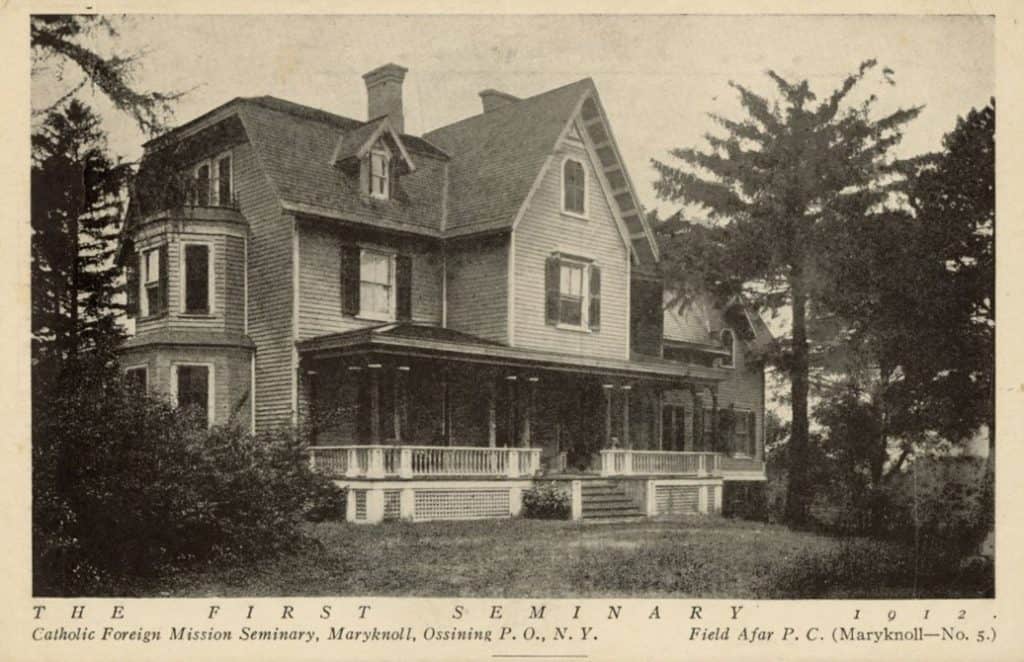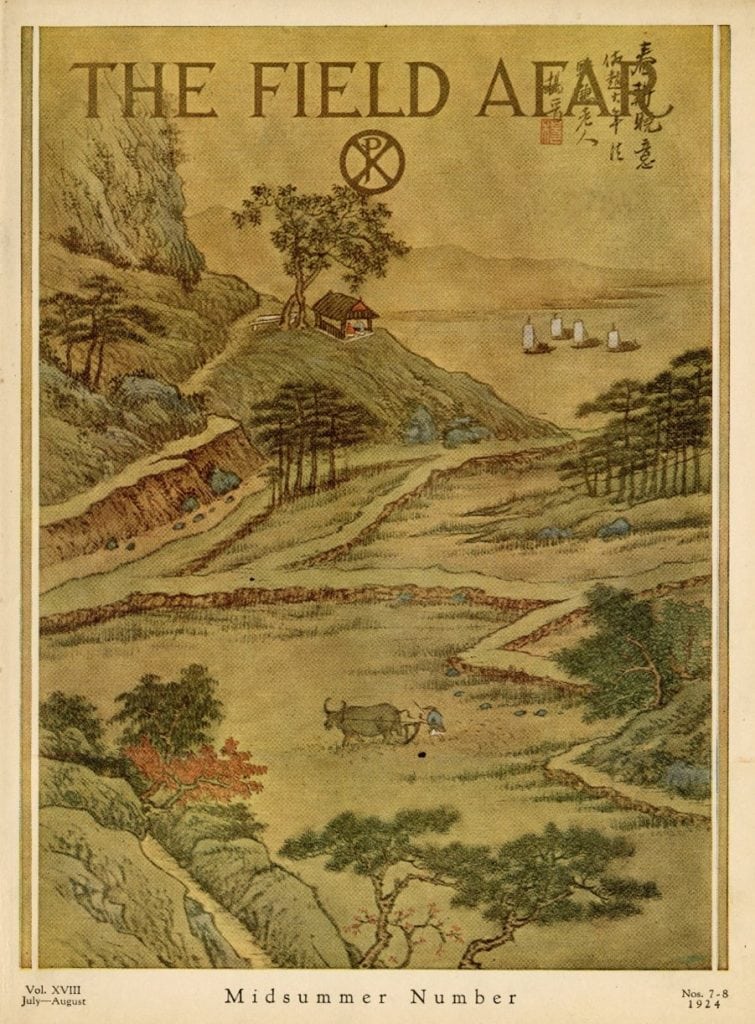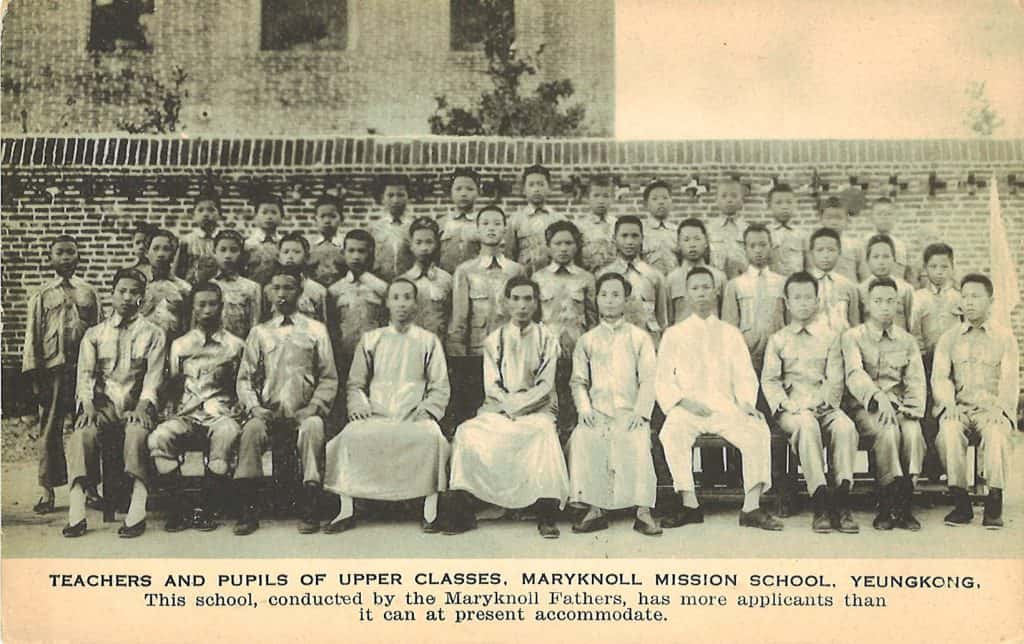
Establishing an American Catholic Foreign Mission Society
Thomas Frederick Price, the first North Carolinian to be ordained a Catholic priest, and James Anthony Walsh, a Massachusetts priest who was the director of the Propagation of the Faith in Boston, first met in 1904 at a conference of the Catholic Missionary Union in Washington, DC.
While the purpose of that conference was to discuss domestic mission work, Fr. Price was enthusiastic for a worldwide view of Catholic mission. Fr. Walsh shared this vision, and the two men began a six-year correspondence.
In 1910 they met again, this time at the International Eucharistic Congress in Montreal, Canada, and began to flesh out the vision of an American Catholic Foreign Missionary Society. The American church hierarchy endorsed the idea and on June 29, 1911, Pope Pius X officially sanctioned it. The Catholic Foreign Missionary Society of America, commonly known as the Maryknoll Fathers and Brothers was born.
Realizing the vision did not progress as swiftly. A seminary needed to be built, seminarians had to be found for instruction in this entirely new service, and the groundwork for exactly where the missionaries would be sent had to be established.
Property for a seminary was found in Hawthorne, New York, but it was snatched away by John D. Rockefeller. A successful lawsuit against him by the Society resulted in sufficient funds to buy a farm on high ground outside of Ossining, New York. This location became “Mary’s Knoll,” soon shortened to “Maryknoll.” The farm’s house became the first Maryknoll seminary.

To this house came the Society’s earliest members. Among them were: Thomas McCann who would become Maryknoll’s first Brother in 1912. He was called to service but not ordained as a priest. And three young men ordained as priests for Maryknoll: Francis X. Ford, Bernard F. Meyer, and James E. Walsh. In 1918 these three men and Fr. Price would be the first Maryknollers sent to mission in China.
Building a Society, a Seminary and Spreading the Word
Raising the funds for construction of a substantial seminary was agonizingly slow. At Maryknoll, Fr. Walsh devoted most of his energies to the education of priests, creating promotional literature and other spiritual responsibilities. Fr. Price travelled throughout the United States to spread the word about Maryknoll, seek seminarians, and raise money for the seminary. The first World War’s impact on these efforts was substantial. Construction of the seminary happened in sections beginning in 1920 and took more than 30 years to complete. The cornerstone of the final section to be built, the chapel, was laid in 1953.
In his days in North Carolina, Fr. Price not only established the Nazareth Orphanage in 1898 and expanded its purpose in 1902 by opening a missionary training house there, he also started a magazine, Truth, in 1887 to evangelize for the church to both Catholics and non-Catholics. Fr. Walsh had a similar vision and founded his magazine, The Field Afar, in 1907 when he was director of the Society for the Propagation of the Faith in the Archdiocese of Boston.
Fr. Price’s publishing experience merged with Fr. Walsh’s and resulted in the Society’s continuation of Walsh’s publication The Field Afar, now known as Maryknoll magazine. By 1921 Maryknoll had its own official post office and in 1922 the magazine was mailing in excess of 700,000 copies of The Field Afar annually.


Maryknoll Sisters
Catholic women were also drawn to foreign mission work. In 1912, three women (originally called “secretaries”) arrived to support the production of The Field Afar by writing for, editing, and managing many aspects of the magazine. They had not yet felt the call to religious life. Joining them would be Mary Josephine “Mollie” Rogers of Roxbury, Massachusetts who had already been helping Fr. Walsh with the same tasks during his SPF days in Boston.
Mollie would become Mother Mary Joseph Rogers, foundress of the Maryknoll Sisters. In 1920, the “Foreign Mission Sisters of St. Dominic” were officially recognized. Soon they were serving in the United States at Los Angeles and Seattle, Washington. On September 21, 1921, the first group of Maryknoll Sisters departed for their mission in China.
As the congregation grew, the sisters moved off the society’s campus into their own motherhouse across the rural road in 1932. As it was in the society, their overseas mission work expanded into Africa and Latin America. They would also found a college and cloister.

China
On September 7, 1918, the society held its first “departure ceremony” sending Fathers Price, Ford, Meyer, and James E. Walsh to begin work in China. Fr. Price’s work there would be short-lived as he fell ill with appendicitis and died in 1919.
The early missioners spoke no Chinese and were ignorant of local customs. Over the years, however, schools, medical clinics, and churches were developed and conversions were made.

China was not always welcoming. Civil wars raged and local institutions shunned the foreigners. By the 1930s, Maryknollers, both priests and sisters, were to be found in South China as well as Hong Kong and Manchuria.
The eventual success of the 1949 Communist revolution led to the gradual expulsion of Maryknollers from China, with their eventual relocation to South America and Africa. One priest, Bishop James E. Walsh (no relation to James A. Walsh), stubbornly stayed in China and was imprisoned in 1958. He was freed in 1970.
Change comes with Vatican II
Maryknoll’s membership continued to expand in the 1930s and 1940s. At least five “pro-seminaries” or “junior seminaries” were established in various parts of the United States. The Sisters added a new novitiate in 1947. Departure groups of priests and sisters continued to grow as did the ceremonies attended by friends and family.


Expansion would end when dramatic changes in the church, came as a result of Vatican II, caused many Maryknollers to question their vocations. The 1960s and 1970s hit Maryknoll hard as priests requested laicization for many reasons ranging from opposition to the liberalization of the Church, to secularization, to marriage. This exodus, combined with the aging of the remaining fathers and sisters in the St. Teresa’s retirement home and the sisters’ residential center, put a great strain on Maryknoll’s mission.
Vatican II did, however, put a focus on lay people in the church. For Maryknoll this resulted in the society establishing an experimental “lay mission” program in 1972. Three years later that program would become Maryknoll Lay Missioners, a joint effort by the Society and Sisters accepting individual lay people and families into mission. In 1994 it becomes an independent organization.
Despite numerous challenges and changes faced in their histories, Maryknoll Fathers and Brothers, Maryknoll Sisters and Maryknoll Lay Missioners have prayerfully and faithfully served in global Catholic mission work for more than a century.
Note: I am grateful to the Maryknoll Mission Archives for the use of the image of the 1924 issue of The Field Afar and the postcard of the first seminary in 1912. All other cards are from my New York State postcard collection.


What an amazing story! Thankyou
In this article, “SPF” stands for Society for the Propagation of the Faith.
I’m delighted to read about the Maryknoll missioners here. I had no idea that there were related postcards. (No, I’m not related to either of the Bishops Walsh.)
Another bravura performance!
A well researched article. Very interesting reading.
Maryknoll sure has an interesting history. Thank you for sharing the research and images.